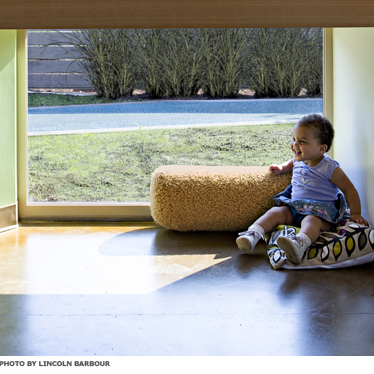
Parent
Parenting, supervising, and opportunities for bonding with children
Clear sightlines allow parents to supervise their children without being in the same physical space.
Visibility allows children access to play while their parent is preparing a meal, but also supports developmentally appropriate autonomy for children.
Important visual connections include:
Visibility allows children access to play while their parent is preparing a meal, but also supports developmentally appropriate autonomy for children.
Important visual connections include:
- Between kitchen and adjacent communal spaces
- Between kitchen and exterior space
- Between interior communal spaces and the outdoor playspace
- Between bedrooms and laundry
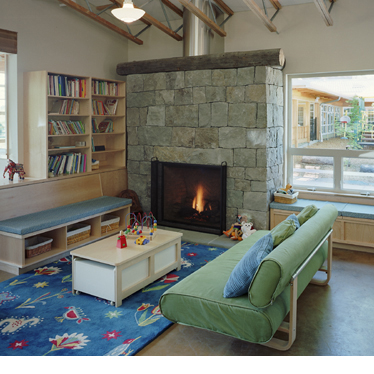
Intimate spaces support children’s needs.
Cozy multi-use spaces free of distractions, such as study areas and reading nooks, encourage children to focus, bond with parent, follow interests, read, do homework, draw, play and imagine.
Academic achievement is tied to resilience in children. Most school-aged children will have homework that must be completed with parental assistance. Areas that are quiet, encourage focus, have ample table space and provide room for a supportive parent make getting homework done easier.
Cozy multi-use spaces free of distractions, such as study areas and reading nooks, encourage children to focus, bond with parent, follow interests, read, do homework, draw, play and imagine.
Academic achievement is tied to resilience in children. Most school-aged children will have homework that must be completed with parental assistance. Areas that are quiet, encourage focus, have ample table space and provide room for a supportive parent make getting homework done easier.
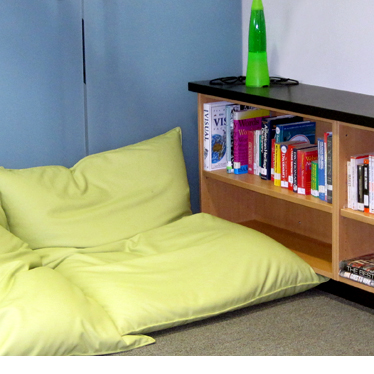

Evenings are busy times for families. These fundamental parenting tasks must all be accomplished between 4pm and 9pm for most families: help with homework; make, eat, then clean up dinner; bedtime routines including baths, brushing teeth, and reading stories. Cooking, eating, study spaces and bathrooms may need to accommodate all of these activities for all families simultaneously.
Separate spaces for teens address their need to complete homework, spend time alone, connect with friends via phone or social networking sites, or have a private talk with a parent.
While most communal living programs do integrate space for young children, the specific needs of teens can also be accommodated with a small room set aside as a “teen room” which may include desks, internet access, TV, and music.
The challenge of private spaces for teens is greatly reduced when families have individual apartments or units.
While most communal living programs do integrate space for young children, the specific needs of teens can also be accommodated with a small room set aside as a “teen room” which may include desks, internet access, TV, and music.
The challenge of private spaces for teens is greatly reduced when families have individual apartments or units.
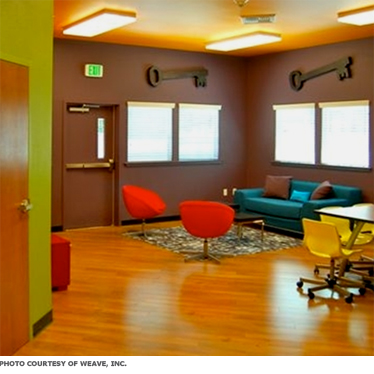
Flexible furniture supports multiple types of activities and age groups.
For instance, smaller tables may be pushed together for communal dining or separated for craft activities. Child “friendly” furniture such as oval or round tables (without sharp corners) and durable materials help to alleviate a parent’s concern about their child(ren) getting hurt or damaging the program’s property.
Furniture that provides a sense of comfort and control is important for anyone dealing with stress and anxiety. Provide furniture that meets the needs of a variety of people and abilities, examples include:
For instance, smaller tables may be pushed together for communal dining or separated for craft activities. Child “friendly” furniture such as oval or round tables (without sharp corners) and durable materials help to alleviate a parent’s concern about their child(ren) getting hurt or damaging the program’s property.
Furniture that provides a sense of comfort and control is important for anyone dealing with stress and anxiety. Provide furniture that meets the needs of a variety of people and abilities, examples include:
- Chairs with arms accommodate people who are very heavy, or who have disabilities or injuries that make rising without something to push up on difficult.
- A “chair and a half” provides a comfortable place for larger people as well as parent-child cuddling.
- Rocking chairs are therapeutic for self-soothing and parent-child bonding.
- A combination of individual seats and couches give residents the option to choose to sit alone or with others
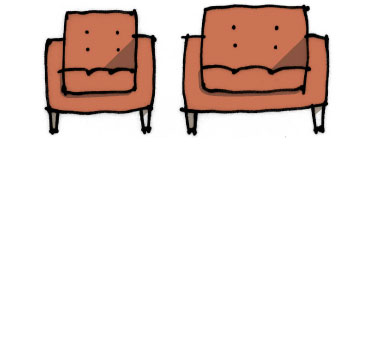
Play areas or alcoves for young children apart from the “living room” space allow children to expend energy without intruding on other residents’ space.
Alcoves can be created with furnishings, curtains, floor markings or transitions.
Alcoves can be created with furnishings, curtains, floor markings or transitions.
